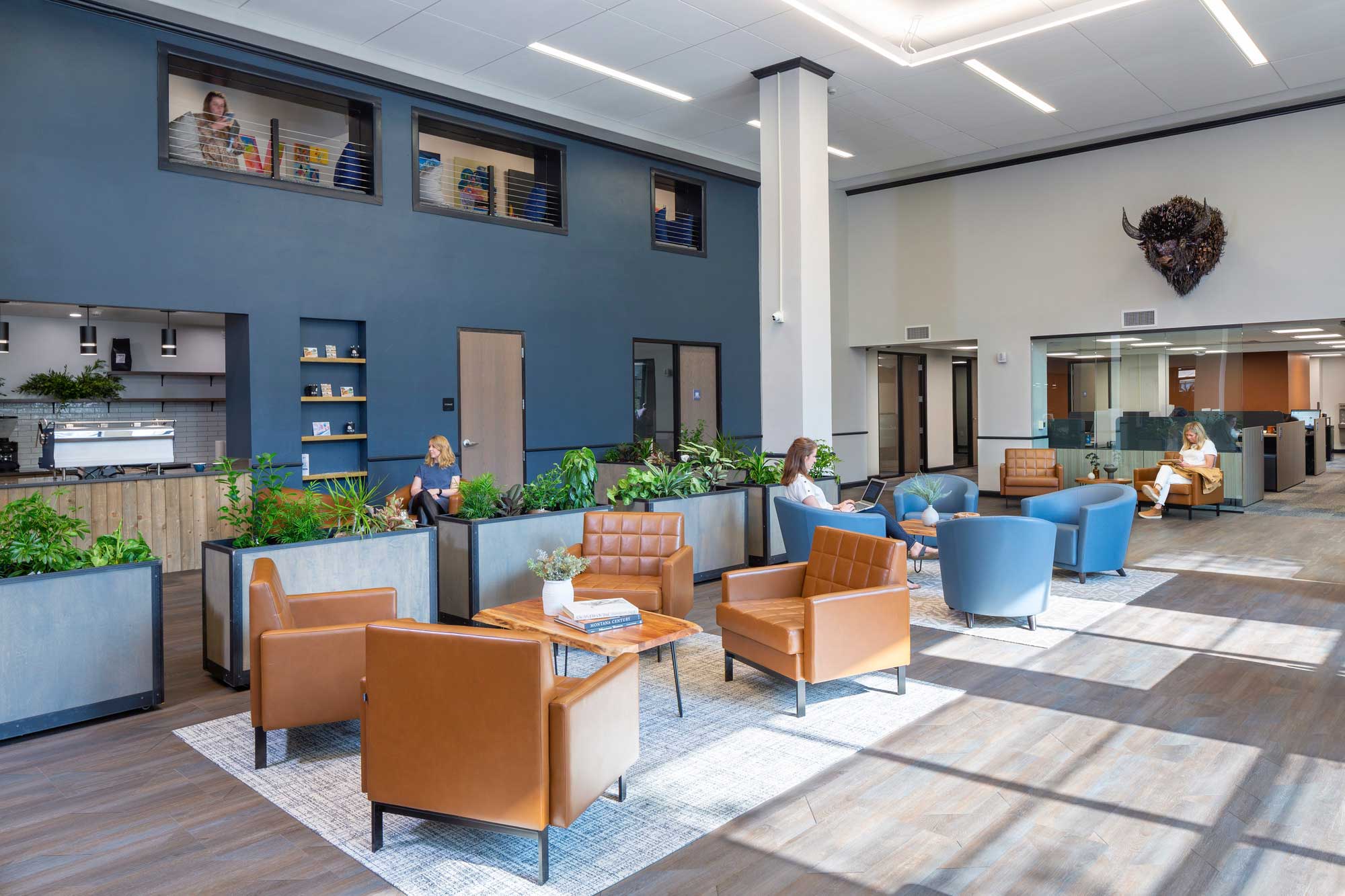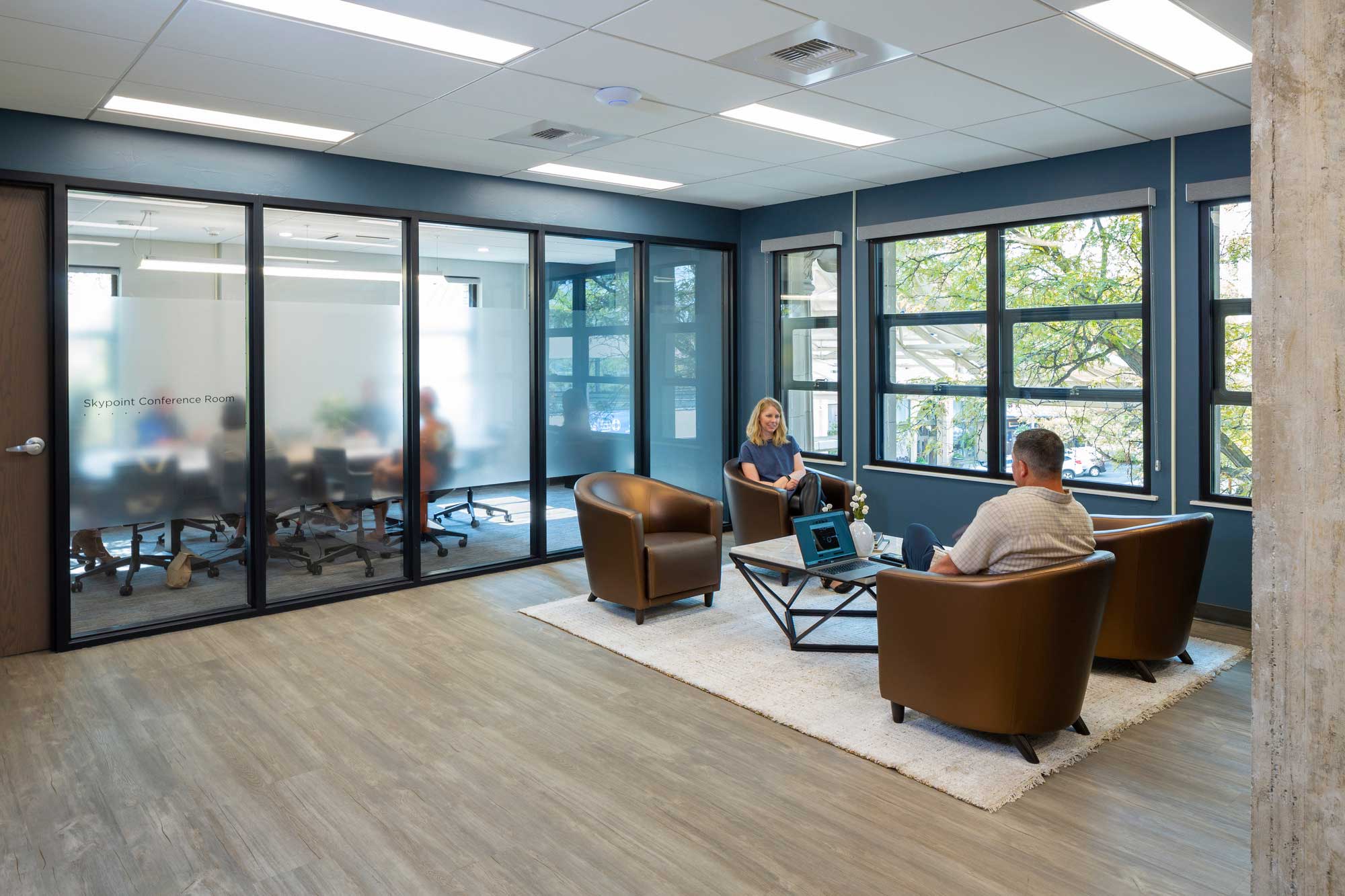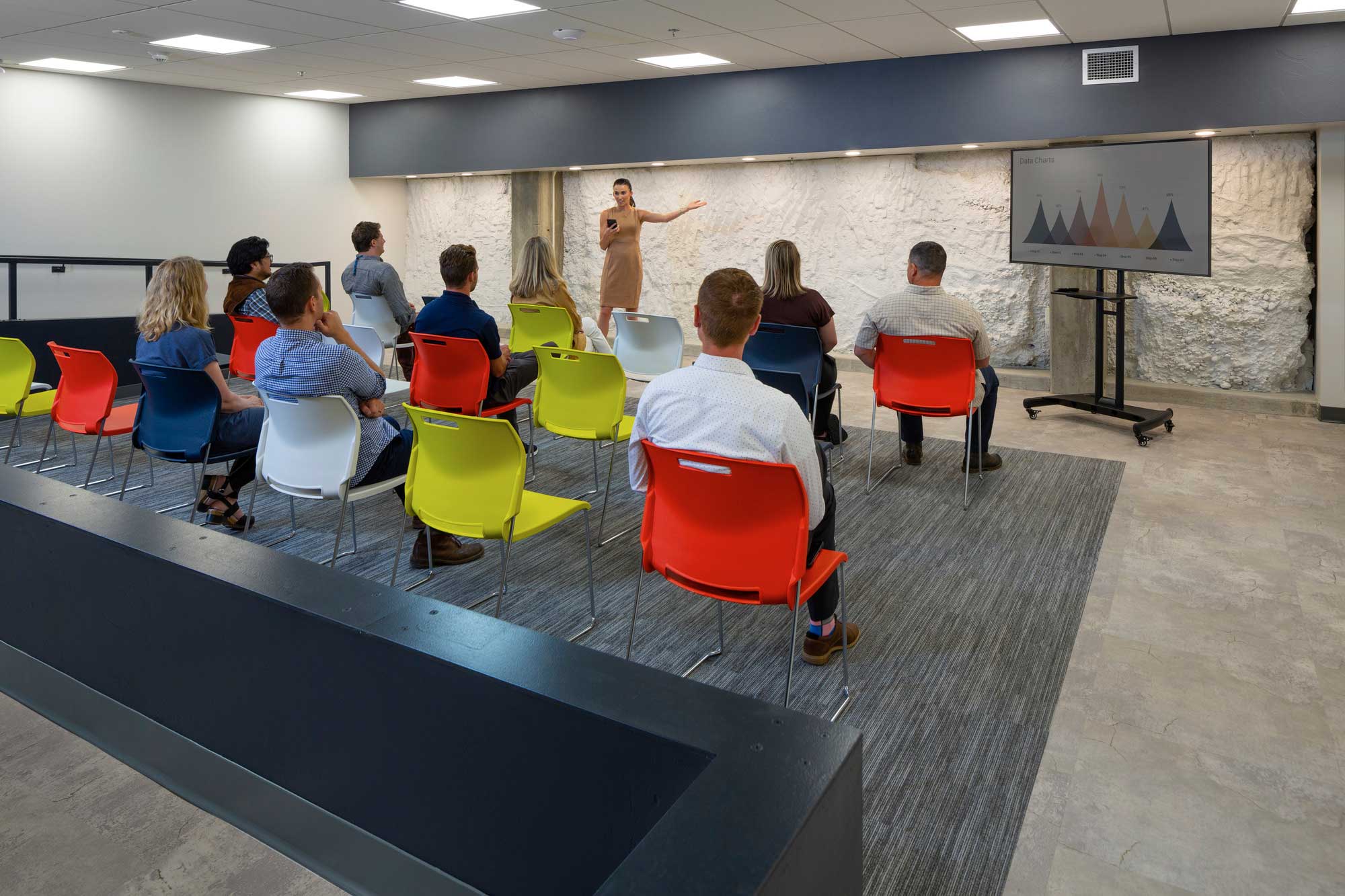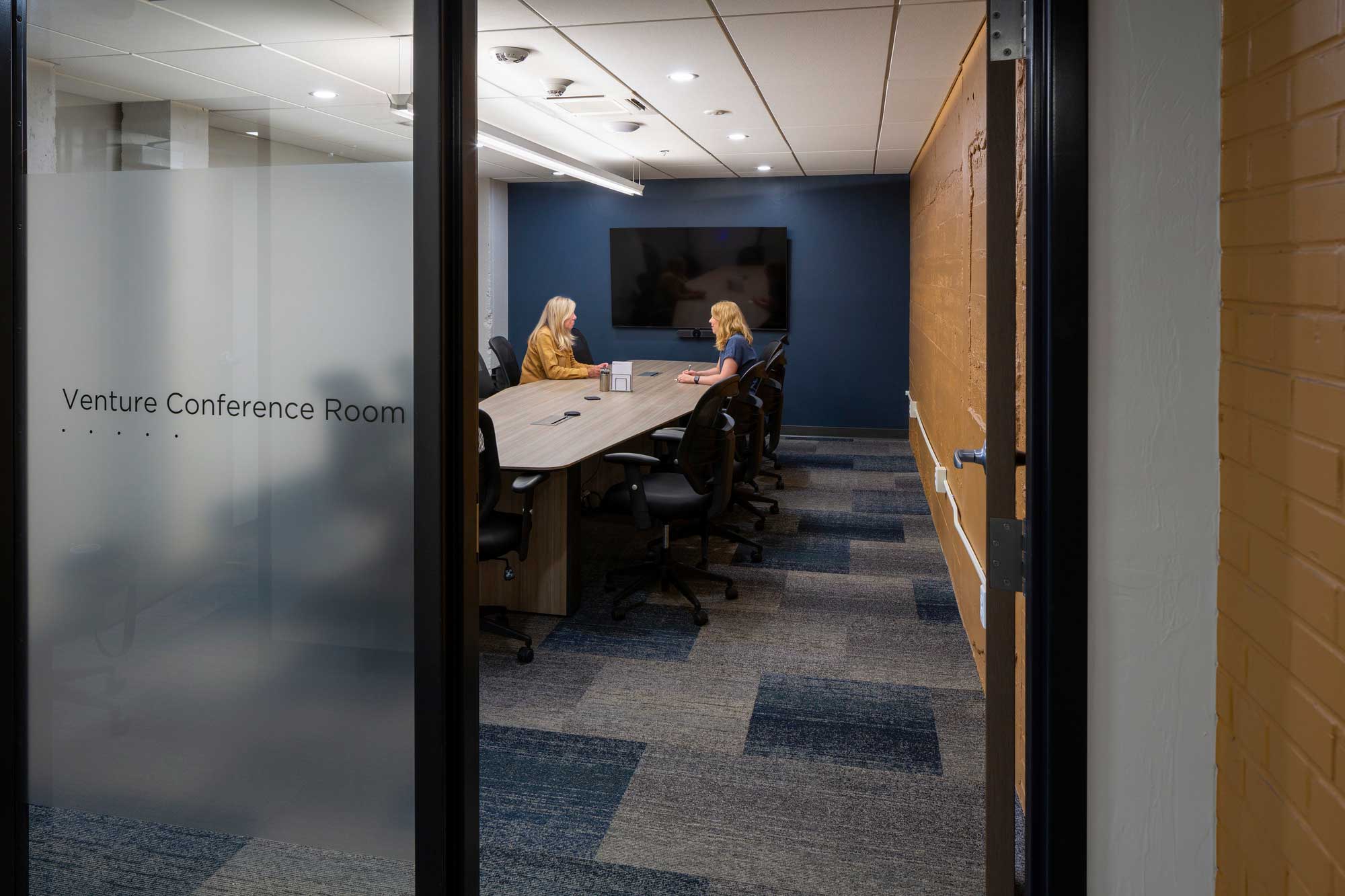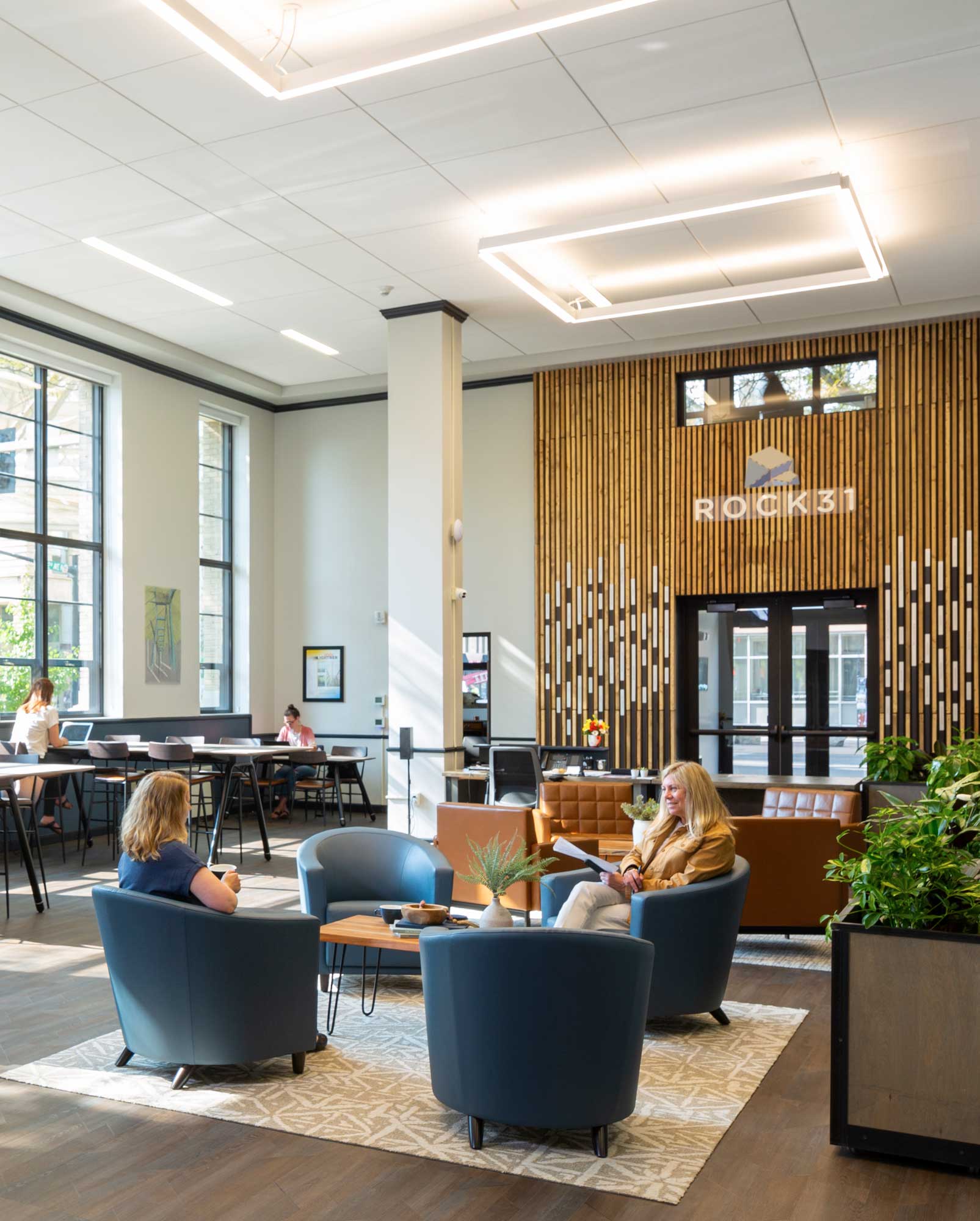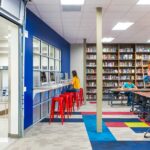Historic Building in Downtown Billings Sees New Life as a Hub for Entrepreneurs
What could be better than a historic preservation project that supports entrepreneurial innovation and long-term economic prosperity? For Big Sky Economic Development (BSED) — a public-private partnership dedicated to sustaining and growing Yellowstone County’s vibrant economy and quality of life — renovating the 100-plus-year-old Montana National Bank building as a business incubator space was the perfect way to facilitate meaningful connections and provide resources for start-ups and small businesses in the region.
The design goals for the renovation project were to create a state-of-the-art, interactive space geared toward collaboration, wellness, and productivity, and to honor the history of Billings while looking to the future by helping new and existing businesses flourish and grow. As a Billings native, I was excited to be part of this project and support BSED with their vision to make this space an incredible community asset.
Making Every Decision Count
To realize a business incubator hub centered on connections and co-working, our design team incorporated a broad range of space types. From large, open co-working areas to private offices, the project provides opportunities for all types of work modes as well as networking and shared inspiration.
To meet the needs of user groups while staying within budget, the client and project team got creative. Our design decisions carefully balanced the desire to maintain character-defining historic features and prioritize reuse with the need for brand-new systems and materials. As a result, the project is now listed on the register of historic places, validating its character and impact on the downtown community. Through improvements to the mechanical, electrical, and structural systems, the building is set to meet goals related to energy use, health, and wellness, and equipped with an updated chassis enabling the building to endure for the next 100 years.
Additionally, as a project intended to benefit the overall community (leveraging the notion of a community asset), several businesses stepped up to support effort. Through these local relationships, the building was enhanced with audio/visual and security systems, as well as furnishings. A donor wall in the entrepreneurial space highlights those who contributed with kudos from around the community. This type of collaboration — established businesses supporting a great space to start-up and grow other business — helped make this project incredibly successful.
Having an entrepreneurial center in the heart of downtown Billings is the big piece of it. You’re not only driving future business owners into downtown, but also encouraging the surrounding community to leverage this as a place to come together.
Interior Design Notes
To be budget conscious, the team made smart, intentional decisions about the tenant improvements, deciding to retain much that was there, stripping down and exposing old walls, and letting the original structure shine through, while accenting the walls with new materials.
“In the early stages of the design process, we studied the 1918 construction drawings and identified opportunities to punch through existing openings and uncover the brick walls as well as preserve historic architectural features such the original marble stair treads and risers and the marble mosaic tile at the stair landings,” said Interior Designer Madeline Randolfi. “To maintain the historic aesthetic of the existing plaster, a skip coat of plaster was used keep a refined decorative finish throughout the building.”
Community Design Explorations (During a Pandemic)
Our team led robust user engagement activities to get to the core of what was needed, with input from different sectors of the Billings business community, including the 40 BSED board members. Stakeholders were highly engaged and interested in the design process and participated in deep-dive exploration sessions to review design concepts, materials, and decide upon the overall design theme, which was chosen as “Explore.”
All user engagement activities were conducted virtually, as this was during the height of the pandemic, but given the experience we’d recently gained on large, comprehensive workplace projects, our team brought with it the knowledge of how to best utilize online tools and technology to fully engage stakeholders in the process. Today, these digital tools have become part of our regular collaborative design approach, enhancing in-person charettes and concept reviews.

The Project Theme
Explore was the “big idea” chosen to inform the project look and feel; the thought being that economic exploration creates a catalyst for the future of the Billings community. By bringing together people from different backgrounds and experiences, the business community can grow through exploration, push the boundaries, and support others on the journey.
What You’ll Find There
Overall, the project entailed interior renovation of all four floors of the former bank building, preservation of the exterior, landscape architecture to enhance the streetscape, and upgrades to the structural, mechanical, electrical, and plumbing systems. The basement and the first floor are the home of Rock31 — an organization that provides resources and connections for entrepreneurs with peers and mentors, and hosts co-working space and offices for lease. An event space occupies most of the second floor and BSED offices are located on the third floor.
Creating ways for these different areas to have connections between them was something we created through common materials and creating openings between the spaces. For example, from the second-floor mezzanine space, you can see down into the entrepreneurial space below.
Currently, 20 owners, operators, and businesses rent the space. There are no long-term leases; each member instead signs up for monthly memberships. The variety of space types help make it financially viable for BSED and small businesses while giving anyone who comes there a broad mix of opportunities to engage and explore.

Creative Use of Space
As a former bank, we had a bonus space in the basement to play with — the bank vault. We considered several ideas, and the favorite was to adapt the vault into a content creation room. The space has two material backdrop options — original board-formed concrete and plaster — for video needs, while carpet and an acoustic drop ceiling ensure acoustic quality. With the addition of lounge furniture, the space becomes a cool video/podcast production space.

